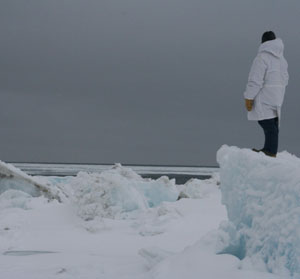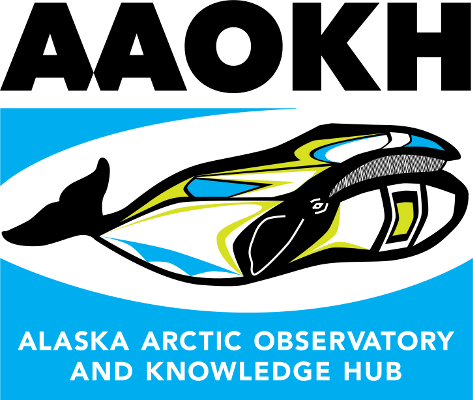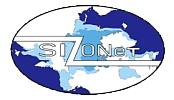
Near Barrow, Alaska: Photo by Andy Mahoney
About SIZONet and AAOKH
The information contained in this database was collected through the dedication of Inupiaq and Yupik sea ice experts along the northern and western coasts of Alaska. The goal of this collaboration is to preserve and pass on local and traditional knowledge of sea ice and its use knowledge and documenting local sea ice change and how that change is affecting community and cultural activities. Arctic coastal communities have long recognized that sea ice conditions are not what they once were; the ocean is freezing later in the fall and the ice is melting earlier in the spring, shorefast ice is less stable, there is far less of the thicker multiyear ice than in the past and environmental conditions overall are less predictable. While such changes have been recorded in detail in the oral history, science and policy makers are not adept at using or accessing information from the oral tradition. This database was developed to serve as an interface between the two distinct knowledge systems of western science and local and traditional knowledge. It serves as an archive and instruction tool for the collaborating hunters and their communities. It is designed be flexible enough to change in response to the evolving nature of the observations while providing a framework that allows researchers to track and compare specific climatic, environmental and ecological features and events across geographic locations and over time.
Through daily reports of ice and weather conditions and explanations of local sea ice features and events observers assist geophysical researchers in better understanding ice processes and ice-coast interactions. This information is helping to improve interpretation of larger scale remote sensing data products like satellite imagery which can ultimately lead to better ice forecasts and climate models. The exchange of information has provided scientists a more detailed understanding of local sea ice processes, but it has also been instrumental in steering research planning to better address information needs within the communities. With local feedback researchers have been able to provide relevant scientific information products back to the communities such as Barrow sea ice trail maps and the Sea Ice for Walrus Outlook (SIWO). Additionally, the database and interactive website are publicly accessible resources available to community members, educators, outside researchers and policy makers.
The local sea ice observer program was borne out of a long partnership between Inupiat and Yupik sea ice experts and their communities and scientific researchers, originally through the Sea Ice Knowledge and Use (SIKU) project, continued under the Seasonal Ice Zone Observing Network (SIZONet), and most recently as a component of the Alaska Arctic Observatory and Knowledge Hub (AAOKH).


